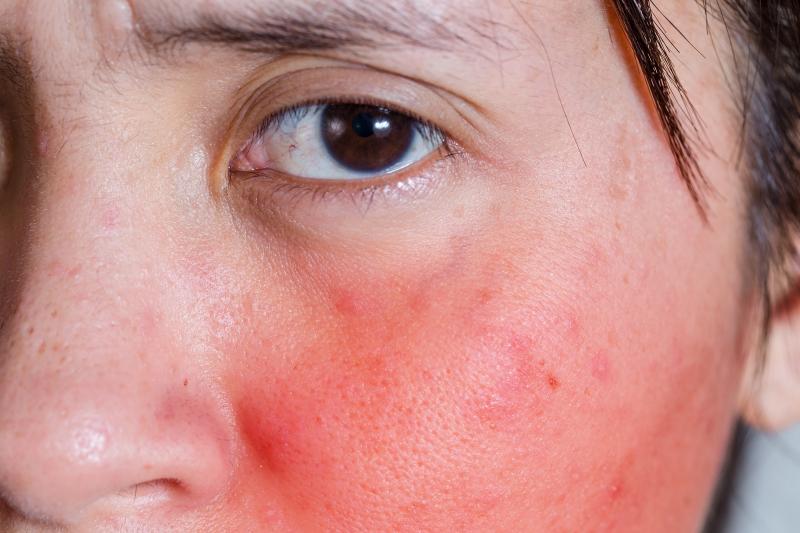
The type I interferon receptor subunit 1 mAb* anifrolumab significantly improves response in patients with systemic lupus erythematosus (SLE) in the second phase III randomized trial of the drug, TULIP-2** — in contrast to the first trial.
“The current trial, TULIP-2, used a primary endpoint that was a secondary endpoint in TULIP-1, the first phase III trial of anifrolumab,” the researchers pointed out.
The BICLA*** response
The primary outcome of response rate at 52 weeks, assessed using the BICLA criteria in the current trial, was significantly higher in the anifrolumab arm than the placebo arm by 16.3 percentage points (47.8 percent vs 31.5 percent; p=0.001). [N Engl J Med 2020;382:211-221]
When the analysis was stratified by interferon gene signature, the response benefit with anifrolumab was particularly prominent among patients with a high interferon gene signature (48.0 percent vs 30.7 percent; p=0.002).
Patients showing a low interferon gene signature also benefit, with a response rate of 46.7 percent in the anifrolumab arm compared with 35.5 percent in the placebo arm.
These findings stand in contrast to the first anifrolumab trial, TULIP-1, which failed to meet its primary endpoint of SLE responder index-4 (SRI-4) response. [Lancet Rheumatol 2019;1: e208-e219]
“Lupus is clinically very heterogeneous, and response is difficult to capture without the use of complex endpoint measures,” wrote Drs Jane Salmon and Timothy Niewold from the Hospital for Special Surgery-Weill Cornell Medicine and Colton Center for Autoimmunity, respectively, both in New York, New York, US, in a linked editorial. [N Engl J Med 2020;382:287-288]
The nature of the disease thus poses challenges in trial design and endpoint selection.
“[So,] how good is good enough?” asked Salmon and Niewold on what constitutes a successful trial for lupus.
The BICLA response, according to the researchers, is a more flexible endpoint than the SRI-4 response.
“The BICLA is based on BILAG#-2004, which can register both partial and complete improvement within an organ system. In contrast, the SRI … requires complete resolution within a particular item to register change and cannot capture partial improvements,” they explained.
“Given the need to bring drugs to patients with SLE, the lupus community has urged regulators to consider trial designs that allow greater flexibility in defining success,” noted Salmon and Niewold. “Perhaps a benefit with respect to just one of two endpoints — the SRI or the BCLA — needs to be observed to declare a drug effective in this complex disease.”
Other key secondary outcomes
The double-blind, parallel-group, phase III TULIP-2 trial randomized 362 patients (93 percent female) with SLE 1:1 to intravenous anifrolumab 300 mg or placebo every 4 weeks for 48 weeks.
Three of the five secondary endpoints significantly favoured anifrolumab over placebo, including reduction of glucocorticoid dose (achieved in 51.5 percent vs 30.2 percent of patients; p=0.01) and a ≥50 percent reduction in skin-disease severity on CLASI## at week 12 (achieved in 49.0 percent vs 25.0 percent; p=0.04).
However, the reduction in the annualized flare rate and counts of tender and swollen joints were not significant between the two treatments.
Herpes zoster was more common with anifrolumab than with placebo (7.2 percent vs 1.1 percent), which according to the authors, was in keeping with previous studies. Other adverse events that occurred at least twice as frequent in the anifrolumab arm than the placebo arm were upper respiratory infection (21.7 percent vs 9.9 percent) and bronchitis (12.2 percent vs 3.8 percent). One death from pneumonia was reported in the anifrolumab arm.